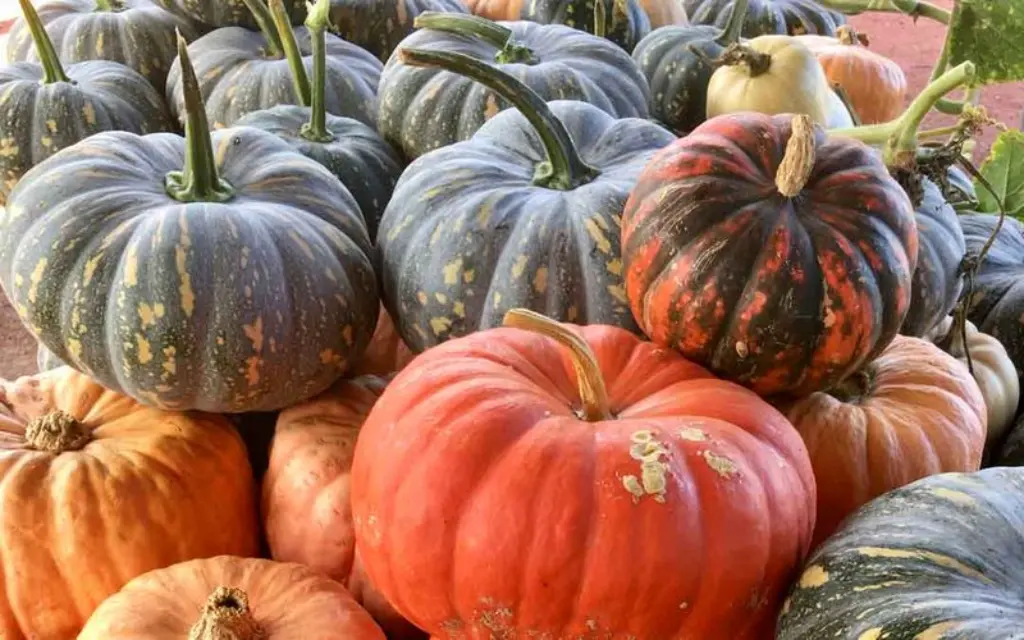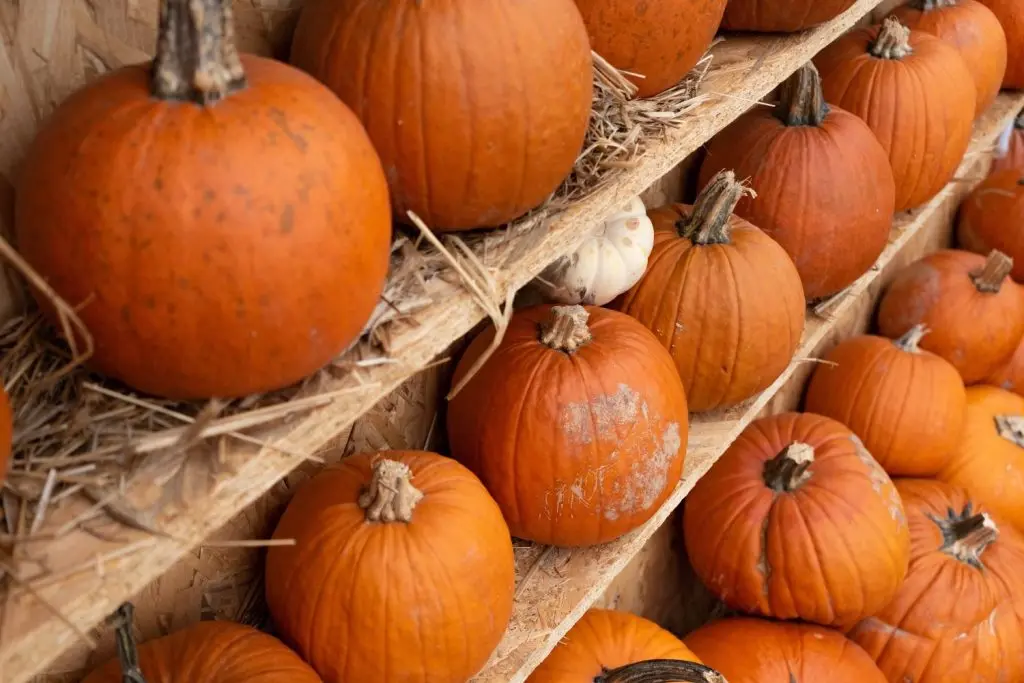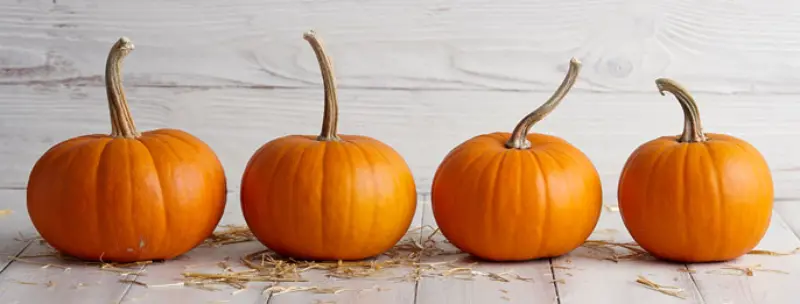As the leaves turn golden and the air gets crisper, the excitement for autumn traditions grows. Among the most beloved of these traditions is picking the perfect pumpkin.
Whether you’re planning to carve a spooky jack-o’-lantern or bake a delicious pumpkin pie, selecting the right pumpkin is essential. Here’s a comprehensive guide to help you make the best choice this pumpkin season.
Understanding Pumpkin Varieties

Common Types of Pumpkins
Pumpkins come in a wide range of shapes, sizes, and colors. Here are some of the most popular varieties:
- Jack-o’-Lantern: These are the classic pumpkins, perfect for carving.
- Sugar Pumpkins: Smaller and sweeter, ideal for baking and cooking.
- Cinderella Pumpkins: Known for their flattened shape and deep orange color, great for decoration and cooking.
- White Pumpkins: These ghostly white pumpkins are perfect for unique decorations.
- Mini Pumpkins: Small and cute, these are great for tabletop decorations.
Specialty Varieties
In addition to the common types, there are also specialty pumpkins like the Blue Hubbard, known for its blue-green skin and sweet flesh, and the Rouge Vif d’Etampes, which has a rich, deep red-orange hue.
The Best Time to Pick Pumpkins
Seasonality
Pumpkins are typically harvested in the fall, with the peak season being from late September to early November. The best time to pick a pumpkin is when it has fully matured and has a deep, solid color. The skin should be hard, and the stem should be dry and brown.
Weather Considerations
It’s best to pick pumpkins on a dry day. Wet pumpkins can be slippery and more prone to damage. Additionally, cool weather helps to preserve the pumpkins once picked.
Where to Find the Perfect Pumpkin
Pumpkin Patches
Visiting a pumpkin patch is a fun and festive way to select your pumpkin. Many patches offer a variety of sizes and types, along with other fall activities like hayrides and corn mazes.
Farmers’ Markets
Local farmers’ markets are great places to find fresh, locally grown pumpkins. Farmers often grow a variety of pumpkins and can provide valuable insights into the best uses for each type.
Grocery Stores
For convenience, grocery stores often have a selection of pumpkins during the fall season. While the variety may be limited, it’s a quick and easy option.
How to Select a Pumpkin
Checking for Ripeness
- Color: The pumpkin should have a deep, consistent color without any green spots.
- Skin: The skin should be hard and not easily pierced by a fingernail.
- Stem: A dry, firm stem indicates that the pumpkin is mature.
Inspecting for Damage
- Surface: Look for any cuts, bruises, or soft spots. These can indicate that the pumpkin is already starting to rot.
- Bottom: Check the bottom of the pumpkin for any signs of mold or softness.
Shape and Size
- For Carving: Choose a pumpkin with a flat bottom so it will sit evenly. A larger size with smooth, even surfaces is ideal for carving.
- For Cooking: Smaller pumpkins, like sugar pumpkins, are sweeter and have a better texture for cooking.
Tips for Harvesting Your Own Pumpkins

Growing Your Own
If you have the space, growing your own pumpkins can be a rewarding experience. Here are a few tips:
- Planting Time: Pumpkins are typically planted in late spring to early summer.
- Soil Preparation: Ensure the soil is well-drained and rich in organic matter.
- Spacing: Plant seeds in mounds, spacing them about 4-6 feet apart to allow for growth.
Harvesting Tips
- Timing: Harvest pumpkins when they have reached their full color and the skin is hard.
- Cutting: Use a sharp knife or pruning shears to cut the stem, leaving about 2-3 inches attached to the pumpkin.
- Handling: Handle pumpkins gently to avoid bruising or damage.
Storing and Preserving Pumpkins

Short-Term Storage
For short-term storage, keep pumpkins in a cool, dry place. Avoid direct sunlight and extreme temperatures.
Long-Term Storage
If you need to store pumpkins for a longer period, follow these steps:
- Curing: Cure the pumpkins by placing them in a warm, dry place for about 10 days. This helps to harden the skin and extend shelf life.
- Cool Storage: After curing, store pumpkins in a cool, dry place, ideally between 50-55°F (10-13°C). Avoid freezing temperatures, which can cause the pumpkins to rot.
Freezing Pumpkin
For cooking purposes, you can freeze pumpkin flesh:
- Cut and Clean: Cut the pumpkin into chunks and remove the seeds and stringy parts.
- Cook: Steam or boil the pumpkin until soft.
- Puree: Puree the cooked pumpkin in a food processor.
- Freeze: Place the puree in freezer-safe containers, leaving some room for expansion, and freeze.
Creative Uses for Your Pumpkin

Carving and Decorating
- Jack-o’-Lanterns: Get creative with your designs! Use carving tools and stencils for intricate patterns.
- Painted Pumpkins: For a no-mess option, paint your pumpkins with fun designs or themes.
- Centerpieces: Use mini pumpkins and gourds to create beautiful autumn centerpieces for your table.
Culinary Delights
- Pumpkin Pie: A classic favorite. Use sugar pumpkins for the best flavor and texture.
- Roasted Pumpkin Seeds: Don’t throw away the seeds! Clean, season, and roast them for a tasty snack.
- Pumpkin Soup: A warm, creamy pumpkin soup is perfect for chilly autumn days.
Pumpkin Crafts
- Pumpkin Planters: Hollow out a pumpkin and use it as a planter for autumn flowers.
- Bird Feeder: Cut a pumpkin in half, fill it with birdseed, and hang it in your yard to attract birds.

Picking the perfect pumpkin is an essential part of the fall experience. Whether you’re visiting a local pumpkin patch, shopping at a farmers’ market, or growing your own, understanding how to select and use pumpkins will ensure you make the most of this versatile fruit. From decorating your home to creating delicious dishes, the possibilities are endless. Embrace the season and enjoy the process of picking your perfect pumpkin!



